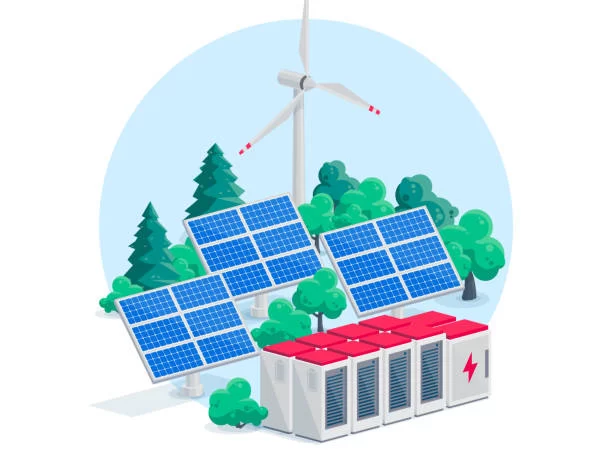Are Microgrids systems a Viable Alternative to Traditional Power Grids?
In an era where sustainability and energy efficiency are paramount, the conversation around power distribution has evolved significantly. One of the most compelling alternatives gaining traction is the microgrid. But are microgrids systems truly a viable alternative to traditional power grids? In this article, we will explore the concept of microgrids, their advantages, challenges, and how they compare to conventional power systems.
A microgrid is a localized energy system that can operate independently or in conjunction with the traditional power grid. It typically consists of renewable energy sources, such as solar panels and wind turbines, along with energy storage systems, like batteries. Microgrids can provide electricity to a specific area, such as a neighborhood, campus, or community, enhancing resilience and energy security.
Advantages of Microgrids systems
- Energy Independence
One of the most significant benefits of microgrids is their ability to operate independently from the traditional grid. During outages or emergencies, microgrids can continue to supply power, ensuring that essential services remain operational. This feature is especially beneficial in remote or disaster-prone areas.
- Integration of Renewable Energy
Microgrids facilitate the integration of renewable energy sources, reducing dependence on fossil fuels. By utilizing solar, wind, and other clean energy sources, microgrids systems can help mitigate climate change and promote sustainability. This shift not only benefits the environment but also aligns with global energy goals.
- Reduced Transmission Losses
Traditional power grids often suffer from energy losses during transmission. Microgrids, being localized, minimize these losses. By generating and consuming energy on-site, they enhance overall efficiency and reliability.
- Enhanced Resilience
Microgrids can enhance the resilience of the overall energy system. In the face of natural disasters or grid failures, they can quickly adapt and restore power to affected areas. This ability to self-heal is crucial for maintaining critical infrastructure and community services.
- Cost-Effectiveness
In many cases, microgrids systems can be more cost-effective than traditional grids. By harnessing local resources and reducing transmission costs, they can provide reliable energy at a lower price point. Additionally, the decreasing costs of renewable technologies make microgrids increasingly attractive financially.
Challenges Facing Microgrids
- Initial Investment Costs
While microgrids systems offer long-term savings, the initial investment can be significant. The costs associated with infrastructure, technology, and energy storage systems can be a barrier for some communities. However, many regions are beginning to see financial incentives and grants to help mitigate these costs.
- Regulatory Hurdles
The regulatory landscape for microgrids can be complex and varies by region. Navigating permits and compliance with local utility regulations can pose challenges for implementation. Advocating for clearer policies and supportive frameworks is essential for the growth of microgrid technology.
- Technical Complexity
Microgrids require sophisticated control systems and technologies to manage energy distribution effectively. The complexity of integrating multiple energy sources and ensuring seamless operation can be a challenge, particularly in areas with limited technical expertise.
- Dependence on Local Resources
The effectiveness of a microgrid is often tied to the availability of local resources. For example, solar-powered microgrids rely on sufficient sunlight, while wind-powered systems depend on consistent wind patterns. This dependence can limit their applicability in certain regions.
Microgrids vs. Traditional Power Grids
- Scalability
Traditional power grids are typically large, centralized systems that serve extensive areas. Microgrids, on the other hand, are highly scalable and can be tailored to specific community needs. This flexibility allows for targeted solutions that can evolve with changing energy demands.
- Resilience
While traditional grids are vulnerable to widespread outages due to extreme weather or technical failures, microgrids can isolate themselves and maintain power. This resilience makes them an attractive option for critical services such as hospitals and emergency response centers.
- Environmental Impact
Microgrids promote the use of renewable energy sources, whereas traditional power grids still rely heavily on fossil fuels. This difference positions microgrids as a more environmentally friendly alternative that can help reduce carbon emissions.
- Cost Structure
Traditional power grids often involve complex pricing structures and may not reflect real-time energy costs. Microgrids can implement dynamic pricing models, making them more adaptable to supply and demand fluctuations.
Microgrids represent a promising alternative to traditional power grids, offering energy independence, integration of renewables, and enhanced resilience. While challenges exist—such as initial investment costs and regulatory hurdles—the long-term benefits often outweigh these obstacles. As technology continues to evolve and communities seek sustainable solutions, microgrids could play a crucial role in shaping the future of energy distribution. Embracing this innovative approach may not only transform local energy systems but also contribute to a more sustainable and resilient world.

